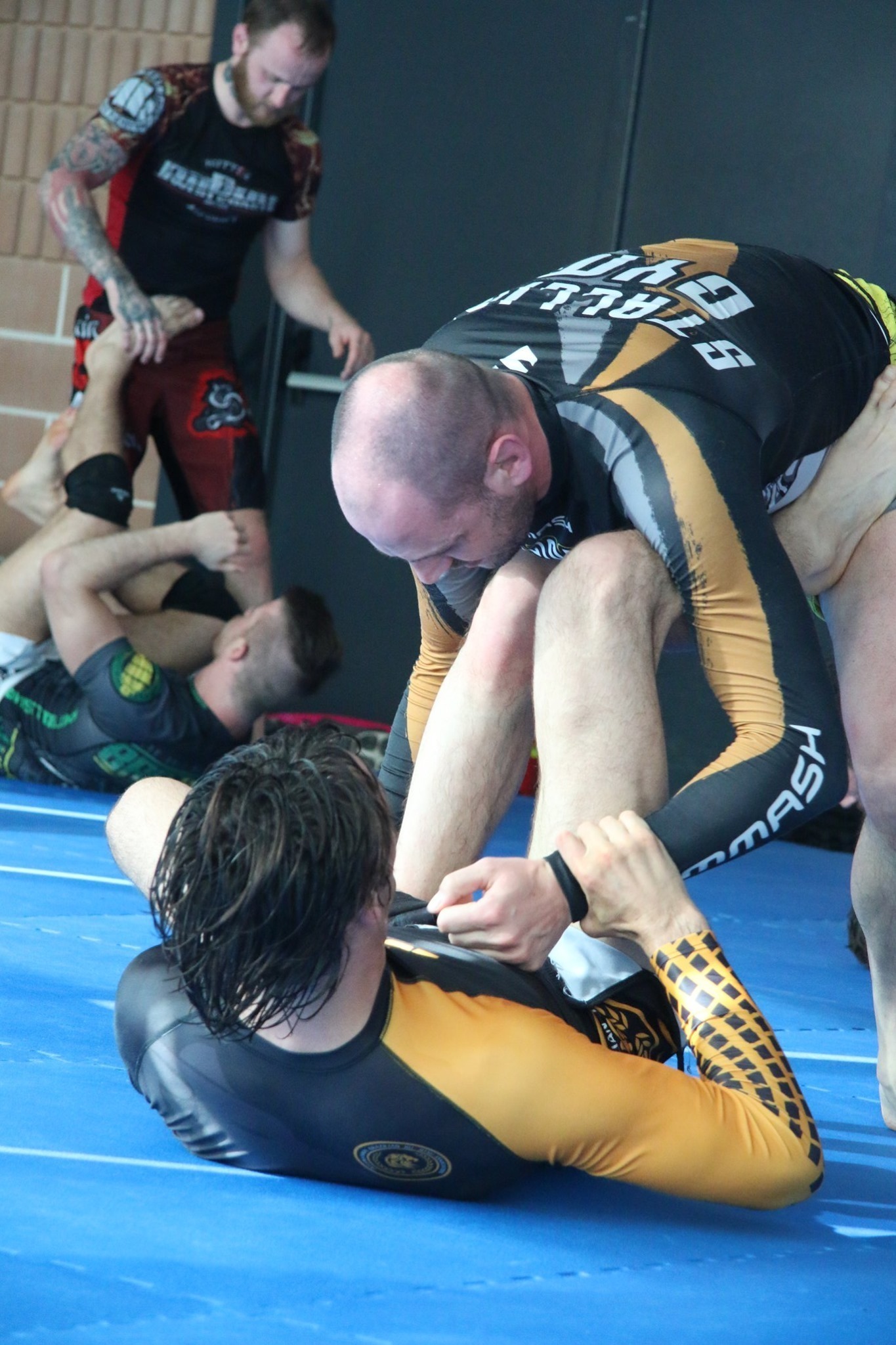By Prof. Martin Guggi
Thinking about BJJ, talking with some friends about techniques and the evolution of our art one though came up:
“Which techniques are for amateur athletes and which are for professional athletes?”
Sparing in a gym is completely different thank competition and only a few are going to compete and even less are going to compete on a high level.
Why should we allow all techniques in the gym if some techniques are dangerous?
Amateurs should not have the decision to make if they are going to risk an injury or not.
How to define dangerous and not dangerous techniques?
Last week I was sparring with a friend. This guy is coach, is working next to his time at his academy. During sparring i got him in a triangle and he almost escapes – so I switched to an armbar. He was still trying to defend and escape and suddenly his arm popped. I felt terrible after this injury …. The elbow hurts, you cannot move the arm, but you can go back to your work to do almost everything. It takes 2 weeks before the pain is gone but he was able to work.
Of course, it was not my intention to hurt my friend. But now think about the same situation on the leg. What if it was a heel hook and not an armbar?
Do not get me wrong. I love to heel hook people, and with long time training partners I really feel save training also heel hooks. But a situation like this can happen so easily even if you train with a long-time training partner.
• Yes, heel hooks need to be taught.
• Yes, it is important to get a feeling about the danger of heel hooks or any other dangerous move.
But we need rules for this.
• When to teach leglocks!
• Which leglock can be taught at which level?
• Students cannot decide which techniques they want to learn! This is the decision of the school.
• The instructors need to improve all the time and train all the modern moves as well to implement them somewhere in the curriculum.
If we now start to think about competition it gets even more important to talk about this fact!
Who can take the risk to get injured and be out of training – and possibly his job too for up to 6 months? Because that’s the time you need in average to recovery from such an injury with an operation. Most of our guys love BJJ because they like to train regularly. Most of them have a family, have a job and do not train full time even if they go hurt in sparring.
If you run a gym or you are training with average BJJ enthusiast, please keep your responsibility in mind and use your brain before being sorry. In the end we need to make the training fun, technical and we want our students to improve. If they reach the level of a brown belt, they developed a good body feeling and know when it is time to “TAP” or “SCREAM” – before anything is hurt.
Why are less people training MMA for a long time? Because you cannot take the risks if you are not a professional fighter. But as Grappler we should learn from this and do not fall in the same trap.
Here my personal belt hierarchy for dangerous techniques.
Following techniques are allowed for these belts – even if they are not IBJJF conform.
• Blue: straight ankle lock, wrist locks
• Purple: Kneebar, Toehold
• Brown: Heelhook, Bicep/Knee slicer, Legsiccor Takedown, Kneereaping, Groovit
• Black: all
Forbitten: Jumping Guard Pull at all levels!
I still think a black belt must have an understanding about all techniques even if we will never master everything. I am also a big believer that all techniques must be taught. But our fist goal for our students must be to make the training save. That’s why a hierarchy when to teach a dangerous technique is important. Only a few will reach the brown belt level but there is so much to learn before. Why start before with the dangerous moves?
There are still a lot of ways to make the training with the heel hook saver. In the end it starts with the mindset people have. People with the right mindset, the ability to control their moves can nearly always stop the move – but take my situation with my friend as an example. You can never control everything –in a dynamic sport like grappling it is very unlikely to control all situations of a fight – even if you want too and it is a friendly roll.
I still do not think that the heel hook is the most dangerous technique – but it is one of the more dangerous techniques everyone is practicing right now. We will see how grappling is going to change and develop in the future. And I am also sure that the hipe of the heel hook will fade away when the general knowledge of this technique will increase.



